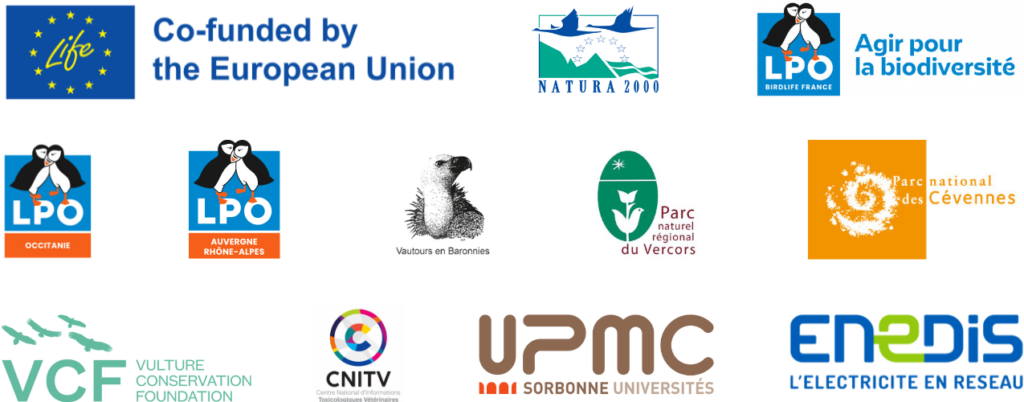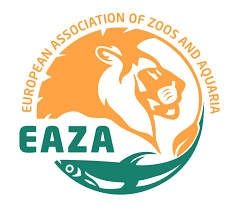Two female Bearded Vultures (Gypaetus barbatus) were successfully released this season in Vercors within the LIFE Gyp’Act project on 27 May 2024. “Fuego” and “Boreale” from the Guadalentin Bearded Vulture breeding centre in Andalusia are now adapting to their new life in the wild at Southern France.

Releasing the birds to consolidate the Bearded Vulture population in South-eastern France
Both Bearded Vultures come from the Guadalentín breeding centre (Cazorla, Spain), which is one of the most important centres within the Bearded Vulture Captive Breeding Network (Bearded Vulture EEP), coordinated by us at the VCF on behalf of EAZA’s European Endangered Species Programme.
For decades, we have been releasing captive-bred Bearded Vultures across Europe to restore local populations in areas where the species became extinct or are under threat. VCF oversees global captive Bearded Vulture efforts, ensuring coordination and adherence to EEP guidelines. As coordinators of the Bearded Vulture Captive Breeding Network, we optimize breeding outcomes and maintain conservation efforts across Europe.
This release was done as a part of the LIFE Gyp’Act conservation project, which aims to consolidate the Bearded Vulture population in South-eastern France, ensuring the connection between the Pyrenean and Alpine populations.
With this release, it was already the 10th time Bearded Vultures were released in the Vercors massif as part of different reintroduction projects.
Meet Fuego
On a crisp morning in Guadalentín, on 26 February 2024, a tiny chick named “Fuego” (BG1221) broke free from its fragile egg. Weighing just 149.6 grams, Fuego’s arrival was met with a mix of anticipation and concern. The egg, with its exceedingly thin shell and two significant fractures along its main axis, had cast doubt among the staff about the chick’s chances of survival.
To everyone’s amazement, Fuego defied the odds. Despite needing help to hatch, she began to grow and develop normally. At just 7 days old, she was first adopted by a female named Nona. Unfortunately, this initial adoption didn’t succeed, leaving the future uncertain once more.
But fate had other plans. The female Keno took Fuego under her wing, and this time, the adoption was a success. Under Keno’s care, Fuego flourished. Days turned into weeks, and soon Fuego reached the milestone of 91 days old. It was then that she was ready to spread her wings and embark on her next adventure in Southern France.

Meet Boreale
Just a few days after Fuego’s remarkable journey began, another chick named “Boreale” (BG1229) hatched on the early morning of 4 March 2024. Weighing in at 151.9 grams, Boreale’s arrival took place in the nest of Nona at precisely 4 am. However, Nona, still preoccupied with the remnants of the eggshell, unintentionally left the newborn chick half-buried in wool and alone.
By 4:20 am, the staff noticed the chick’s perilous situation and swiftly intervened, removing Boreale from the nest to prevent the cold from taking its life. They brought the fragile chick to the warmth and safety of the Guadalentín center’s laboratory. Under their careful watch, Boreale thrived, growing stronger with each passing day.
Initially, the male Elías took on the role of foster parent, nurturing Boreale as his sole chick, and the bond between them grew strong. A week later, the female Viola, already raising another chick, welcomed Boreale into her care. This transition was seamless, and Boreale continued to develop beautifully.
After 83 days of dedicated care and steady growth, Boreale was ready to embark on the next chapter of its life, fully prepared for release into the wild together with her older “sister” Fuego.

Preparing for the release
When Bearded Vultures reach about 90 days old, they’re ready to be released into the wild. But before that, the dedicated team from Parc naturel régional du Vercorssteps in with some essential preparations. Both young vultures were equipped with identification rings, a unique pattern of bleached feathers, and GPS transmitters. These measures help the team recognize the birds from a distance and track their movements and behavior in the wild. Monitoring is crucial, as it allows the team to identify and address any threats and to respond quickly if a bird needs rescuing, significantly improving their chances of survival.
The release process involves a technique known as the hacking method, which closely mimics the natural way young vultures fledge. The hacking platform, specially designed for their comfort and safety, becomes their temporary home. The platform is carefully prepared with soft wool for warmth and comfort and is surrounded by fences to protect the young birds from predators. During their time on this platform, the team at Vercors provides food and conducts close monitoring, ensuring the birds remain undisturbed by human presence.
As the young Bearded Vultures grow stronger and more confident, they prepare to leave the safety of the hacking platform and embrace the freedom of the wild, equipped with everything they need for a successful start.
Restoring the Bearded Vulture Alpine and Pyrenean populations
To restore the Bearded Vulture metapopulation between the Alps and the Pyrenees, the LIFE Gyp’Act project plans to release 60 captive-bred juveniles in different locations across Southern France and the Pre-Alps. The LIFE Gyp’Act builds on the legacy of the LIFE GypConnect and ensures the continuity of the conservation measures implemented so that Bearded Vultures continue to flourish.

LIFE Gyp’Act is a 13M€ project, co-funded by the EU’s LIFE programme, that will run until 30 November 2028. Project partners are LPO – Ligue pour la Protection des Oiseaux as coordinator beneficiary, and the Vulture Conservation Foundation, Association Vautours en Baronnies, LPO Auvergne-Rhone-Alpes, LPO Occitanie, Sorbonne Université, ENEDIS, Centre National d’Informations Toxicologiques Vétérinaires, Parc National des Cévennes and Parc Naturel Régional du Vercors as associated beneficiaries.







